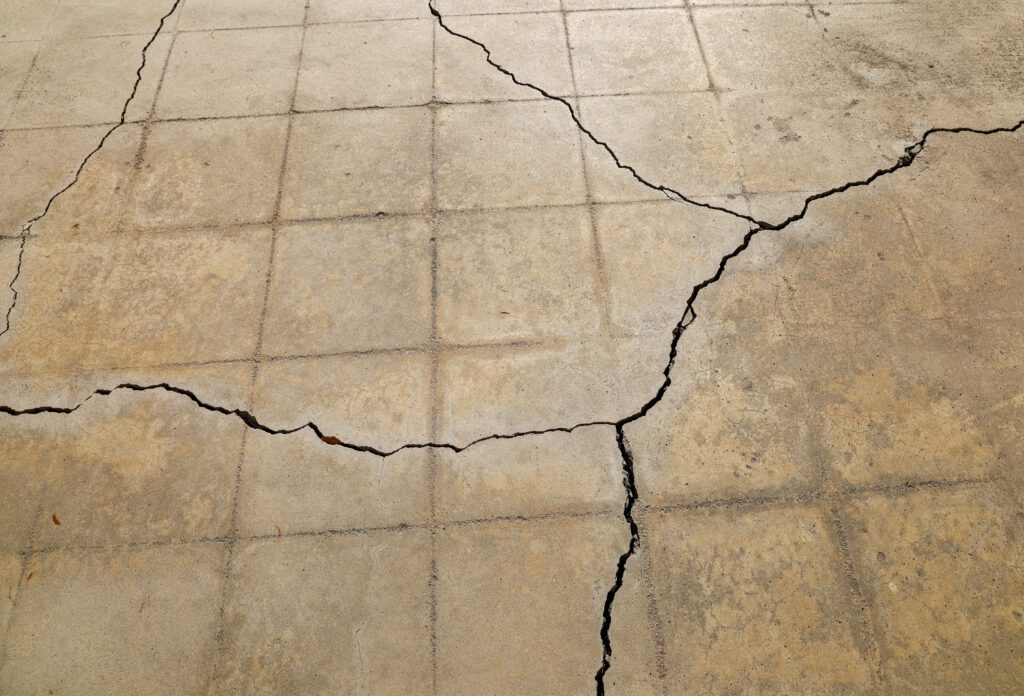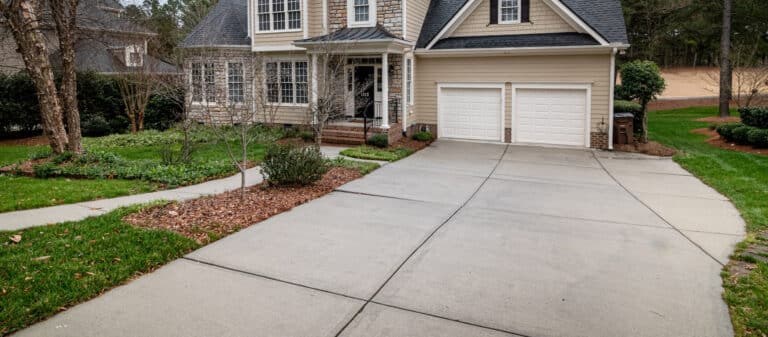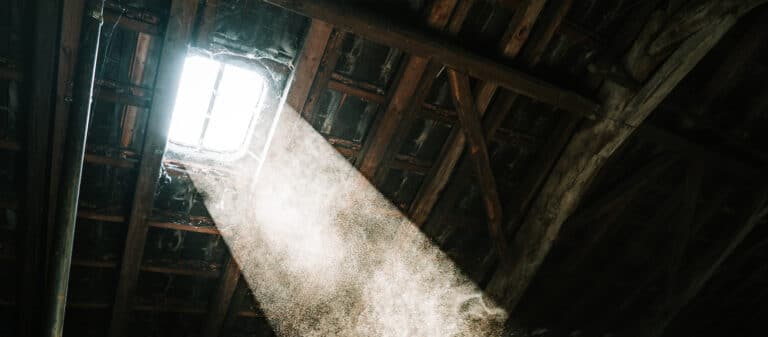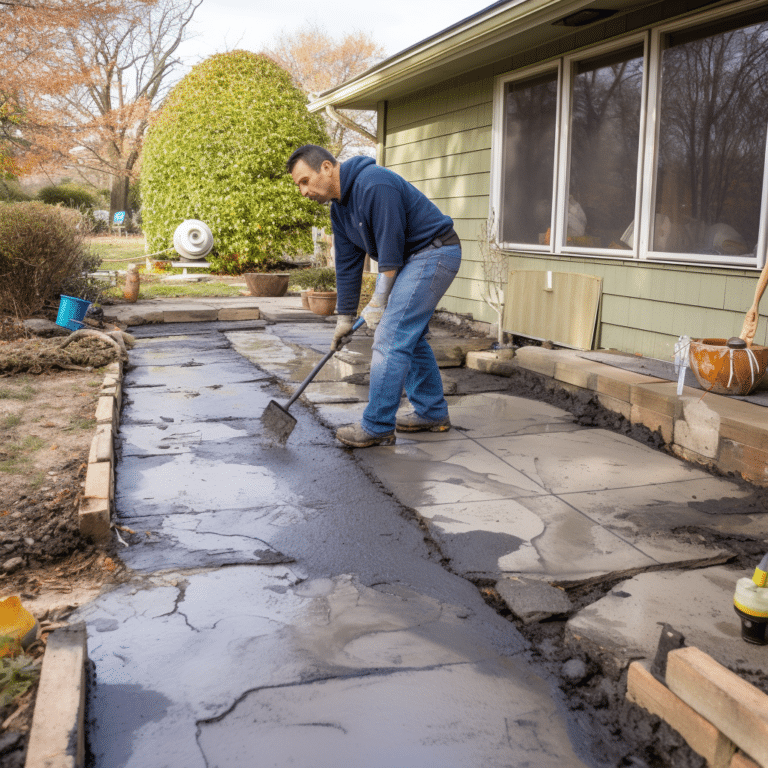If you need concrete leveling in Northeast Pennsylvania, there is no service compared to the benefits of polyjacking.
Unlike mudjacking, which is a short-term and often dangerous solution, polyjacking uses a lightweight and non-intrusive material to level concrete surfaces for up to 50 years.
This article will explore the causes of unlevel concrete surfaces and discuss the benefits of using polyjacking instead of other cost-cutting measures.
Causes of Unlevel Concrete
While concrete is the second-most consumed material on earth, unlike the Roman variety, modern concrete is only built to last between 50-100 years.
Environmental factors, such as soil erosion and displacement, compaction, water exposure, and even tree roots, can disturb and damage many concrete surfaces around your property.
Understanding the causes of unlevel concrete is important because it can lead us to find a viable solution without necessarily replacing the slab.
In many instances, uneven concrete occurs because of voids caused by the above disruptors, which causes concrete slabs to sink in areas under their own weight.
Polyjacking provides a simple and versatile solution to void filling, which can level surfaces without causing further disruption to the slab.
What Is Polyjacking?
Polyjacking levels concrete surfaces using a polyurethane foam that expands underneath the concrete surface to fill voids and lift the slab. A special machine is required to inject the foam, which a contractor operates for a precise fill.
Once cured (in as little as 15 minutes), the foam will last for up to 50 years, offering resistance against water intrusion and erosion.
As you will see below, the polyurethane foam mixture is a lightweight and durable solution to concrete repair, offering years of service for a fraction of the cost of replacing the slab.
7 Benefits of Polyjacking
When evaluating options to repair sunken or uneven concrete, polyjacking provides the best solution for several reasons.
1. Cost-Effective
Compared to the cost of replacing a slab, any form of concrete leveling will be more affordable. However, the advantage of polyjacking is that it offers a long-lasting solution, unlike mudjacking, which requires repair after five years.
2. Long-Lasting
By most estimates, polyurethane foam can last 25 to 50 years, if not longer. Unlike the cement slurry used in mudjacking, polyurethane foam is not susceptible to erosion from water and can withstand NEPA’s winters, which cause other materials to expand and contract rapidly.
3. Greater Precision
Thanks to the small holes used to fill voids, the technicians who use polyjacking are able to precisely control how much foam is injected and needed to lift a slab. Compare this to the hundreds of pounds of slurry that is hydraulically pumped beneath a slab to level it during the mudjacking process.
4. Versatile
Polyjacking is not just used for sidewalks but can be used to lift driveways, foundations, and industrial floors.
5. Quick Installation Times
The process of injecting foam beneath the slab could take anywhere from an hour to a few hours. However, once the foam has been injected, it only takes fifteen minutes to cure, allowing you to use the concrete slab almost instantly. Compare this to mudjacking, which takes anywhere from 24 to 72 hours to fully cure.
6. Lightweight Material
Since polyurethane foam is lighter than a concrete slurry, it is far less disruptive to the surrounding soil. In turn, this adds additional benefits to the concrete slab by minimizing compaction underneath the slab and further soil erosion.
7. Waterproof
Polyurethane is highly water-resistant and forms a water-tight seal around the previous concrete to prevent further erosion. This offers greater longevity, especially when compared to additives used in the mudjacking slurry.
8. Less Intrusive Holes
Polyjacking requires smaller holes (usually the size of a penny) than mudjacking. This makes patching the holes easier and the entire installation virtually seamless.
9. Eco-Friendly
Since mudjacking requires hundreds of pounds of slurry composed of sand, gravel, and cement and only lasts a few years, polyjacking is far more eco-friendly in content. Even compared with the raw materials required to replace a slab, polyjacking is the superior option.
Why We Don’t Recommend Mudjacking
This means that when it comes to choosing between polyjacking and mudjacking for concrete leveling, the better choice is clearly polyjacking.
Mudjacking simply has too many problems associated with its use and typically lures customers in with its low pricing. Some drawbacks of mudjacking we caution customers against include:
- Potential for Complications: Mudjacking uses a hydraulic pump to insert hundreds of pounds of slurry. Not only can this exacerbate soil compaction, but it may also damage underground utilities.
- Less Durability: By the best estimate, mudjacking only lasts about 5 years, making it a short-term patch that is more trouble than it’s worth.
- Longer Cure Times: Mudjacking slurry takes longer to cure, between 24-72 hours, depending on weather conditions.
- Larger Holes: The holes left over from mudjacking are more noticeable and may allow water and other debris to seep through the concrete.
- Less Precision: Mudjacking offers less control over the lifting process, making it harder to achieve an even surface and leading to potential accidents.
When it comes to finding a concrete leveling solution, don’t let companies that offer mudjacking trick you with lower pricing. Mudjackinbg is a short-term patch with lots of complications.
On the contrary, polyjacking offers a long-lasting solution at a more affordable price than replacing a slab, offering customers a trustworthy solution for unlevel concrete.
FAQs
How long does the polyjacking process take?
The polyjacking process typically takes a few hours, and the area can be used almost immediately after the procedure.
Is polyjacking suitable for all types of concrete surfaces?
Yes, polyjacking is versatile and can be used for a variety of applications, including driveways, sidewalks, patios, pool decks, and interior floors.
How long do polyjacking repairs last?
Polyjacking repairs are highly durable and can last up to 20-50 years due to the resilience of the polyurethane foam.
Will the small holes drilled for polyjacking be noticeable?
The holes drilled for polyjacking are much smaller than those required for mudjacking and are easier to patch, making them less noticeable.











